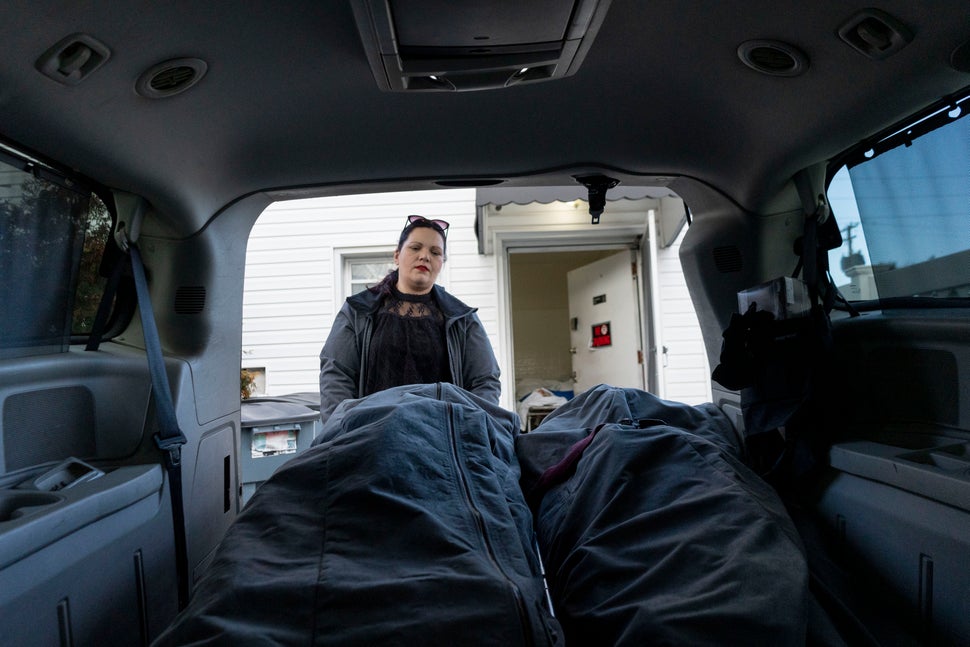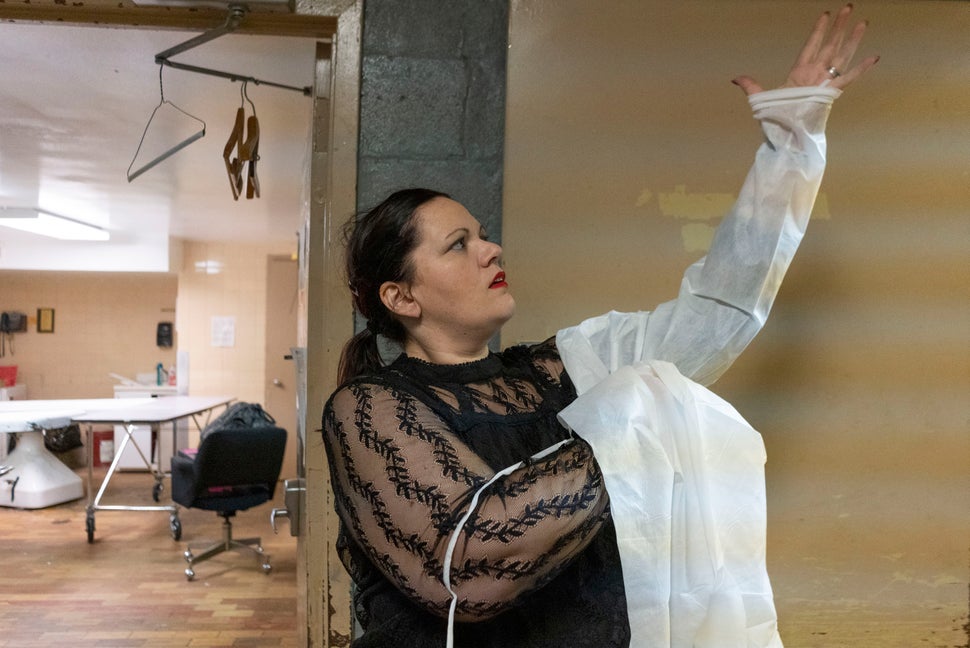When describing her career, Stephanie Castro prefers the term funeral director. Mortician isn’t exactly wrong, but funeral director “has less of a creepy air to it,” the New York-based professional told HuffPost.
The preference in titles is more than just branding, it’s part of a movement to make the industry seem more transparent and bring a modern sensibility to a field that has long been almost exclusively male ― and thought of as somewhat cold and unnerving. As Castro explains it, “Weekly, if not daily, I hear, ‘Oh, I didn’t expect a woman,’ or, ‘I’ve never seen a woman do this.’”
She’s licensed as both a funeral director and embalmer. This means her work includes everything from transporting a body from homes or hospitals to preparing it for burial or cremation, both of which are roles that call for some unusually specific and versatile wardrobe selections.
Day to day, Castro does what the industry calls “trade work,” which means her wardrobe is different from the classic pants suit or skirt and blouse you might see on people who work in funeral homes.
“I’m usually out on the road,” Castro said. “I don’t spend time sitting in a funeral home. My work is very physical. I never know what situation I’m going to walk into, whether it be four feet of snow, which I’ve done, or carrying somebody downstairs.”
This means a lot of her fashion choices are based on the reality that she has to both collect and prepare the dead and talk to their living relatives and loved ones on a daily basis.
In addition to comfort and ease of movement, there’s also the rather unpleasant issue of bodily fluids that can come along with handling human remains, a reality she considers carefully when picking out footwear for work. “You never know what you’re walking into. With a decomposition, I always personally wear boots, because you need something with traction in case it gets a little slippery.”

Accidents can happen, both on-site when she’s removing a body and in the embalming room, which is why she looks for styles that slip-on (laces are too easy to trip over) and have good traction in any weather. And heels are, of course, out of the question.
A fun flat or a breezy sandal is out, because as she explains it, boots “give me a little support, but I don’t have to worry about ‘juice’ getting into my socks. I go through a lot of boots, too, just because I get bleach or God knows what else on them. You don’t want to spend a lot of money on your wardrobe. You need stuff that you’re OK trashing, as well.”
All of this is not to say she doesn’t bring a sense of personal style into her work wardrobe, especially when she’s in front of families arranging their loved one’s final send-off. “I think I tend to go toward things that still feel feminine, like something with a black lace or something with a little ruffle. It’s such a manly job that I do still want to feel sort of like a girl.”

In terms of color scheme, she does gravitate toward the expected darker shades, but not out of any sense of professional obligation; she just really likes black. It’s also a style that she sees changing as the industry sees more women enter the field.
“I think with women, because we are sort of creating our own stance in the field, we have more liberties in what we wear because there isn’t that strict suit dress code. Women will wear pastels and pinks, and no one seems to argue with that.”
There are, however, some considerations to be aware of when dealing with a range of clients with different backgrounds. While she can personalize her wardrobe to a great extent, there are some boundaries she feels that it’s better not to cross professionally when dealing with grieving families. This can include something as simple as not wearing religious articles, such as any jewelry with a cross, or as complex as being aware of the significance that different cultures assign to colors.

Noting that many of her clients are of Chinese origin, she said, “I’m careful about colors … and you don’t want to offend. Red is a power color in Chinese, so it’s OK, but there are other colors that aren’t so good. I try to walk the line, keep it basic.”
In addition to being sensitive to peoples’ beliefs, there are some old-fashioned notions that persist, no matter how modern or increasingly diverse the industry gets. “I have tattoos,” Castro said. “I always make sure my tattoos are covered up when I go into a funeral home because you don’t want to offend anybody. There are lots of funeral directors that have tattoos, and they have to do the same thing. It’s just the way it is right now.”
It’s a lot of work, but it’s a job Castro loves. She wants people to understand that, as difficult and misunderstood as being a funeral director and embalmer can be, she does it because “it’s really rewarding. It’s amazing to be able to help people at their worst time. It’s nice to feel you’ve got some sort of value in the world.”
Given the intensity of client interaction, it’s no wonder that she loves her off-hours so much and “a nice little summer dress because I can’t wear that any other time, so it’s nice to feel different.” But most weekends, she said she just goes the jean-and-T-shirt route, which given all the sartorial pressures of her job keeps things simple and relaxing.
“I try very hard to avoid the black work wardrobe when I’m home,” she said. “As soon as I put on black pants, I feel like I’m going to work.”
